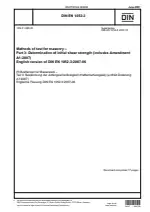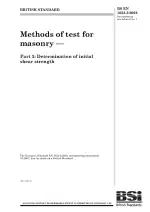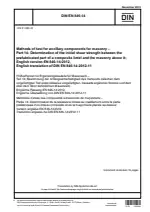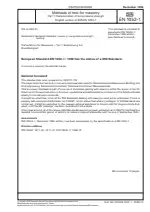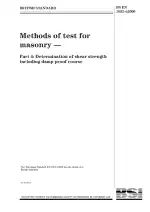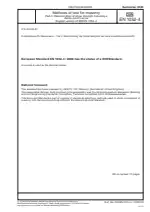Methods of Test for Masonry - Part 3: Determination of Initial Shear Strength
Also Known As:
The DIN EN 1052-3 standard outlines a procedure for assessing the initial shear strength of horizontal bed joints in masonry. This standard is specific to European countries and provides a standardized method for conducting the test.
The test involves subjecting a masonry specimen to shear forces in order to determine its initial shear strength. The specimen is prepared by creating a horizontal bed joint, and the test is carried out on this joint. The purpose of this test is to evaluate the integrity and stability of the masonry structure under shear stress.
By implementing the DIN EN 1052-3 standard, professionals in the construction industry can ensure that masonry structures are built to meet specific safety and quality requirements. This standard provides a consistent approach to determining the initial shear strength of masonry, facilitating accurate evaluations and comparisons across different projects.
| Descriptors | Adhesive shear strength, Bed joint, Bricks, Components, Construction, Construction materials, Definitions, Joints, Masonry, Masonry walls, Material testing machines, Mortars, Shear strength, Strength of materials, Test reports, Testing, Walls |
| ICS Codes | 91.080.30 - Masonry |
| Language(s) | English |
| File Size | 358.4 KB |

